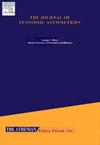Should models of monetary policy asymmetry include interaction terms?
Q1 Economics, Econometrics and Finance
引用次数: 0
Abstract
This paper investigates whether the response of U.S. output to a monetary policy shock is symmetric to the direction of the shock, the size of the shock, and the phase of the business cycle. Many papers in this literature use models that contain only one type of asymmetry; however, looking at individual types of asymmetry may not be enough, and interactions between the asymmetries may be important. My results show that business cycle and directional asymmetry are important and that stimulative monetary policy shocks taken during recessions have little effect on output. This result is missed in models that do not consider multiple types of asymmetry and their interactions.
货币政策不对称模型是否应该包括相互作用项?
本文研究了美国产出对货币政策冲击的反应是否与冲击的方向、冲击的大小和商业周期的阶段对称。这篇文献中的许多论文使用的模型只包含一种类型的不对称性;然而,仅仅观察个体类型的不对称可能是不够的,不对称之间的相互作用可能很重要。我的研究结果表明,商业周期和方向不对称很重要,经济衰退期间采取的刺激性货币政策冲击对产出几乎没有影响。在没有考虑多种类型的不对称及其相互作用的模型中,这一结果被忽略了。
本文章由计算机程序翻译,如有差异,请以英文原文为准。
求助全文
约1分钟内获得全文
求助全文
来源期刊

Journal of Economic Asymmetries
Economics, Econometrics and Finance-Economics, Econometrics and Finance (all)
CiteScore
4.80
自引率
0.00%
发文量
42
审稿时长
50 days
 求助内容:
求助内容: 应助结果提醒方式:
应助结果提醒方式:


